Shows a process ABCA performed on an ideal gas. Find the net heat given to the system during the process.
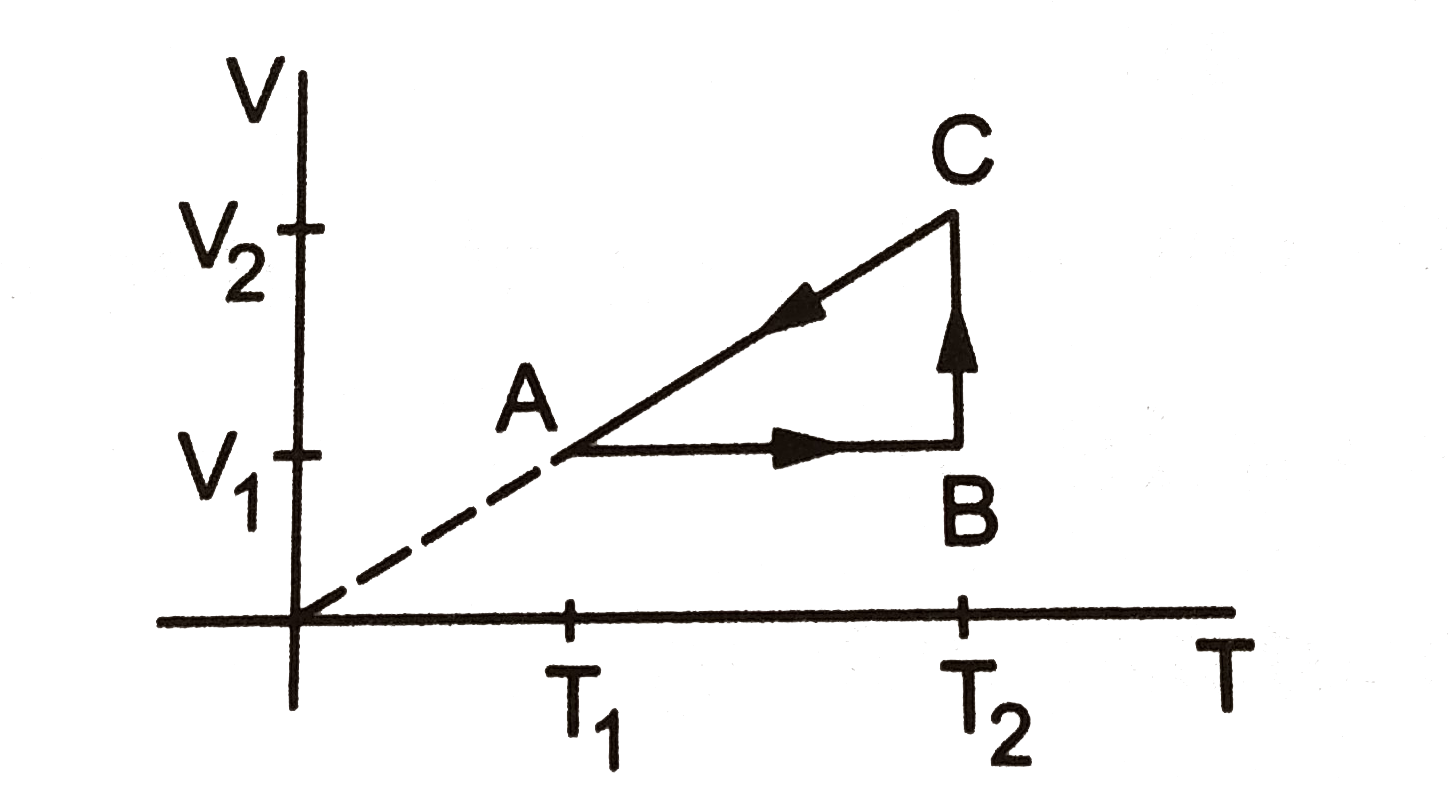
As the process is cycle, the change in internal energy is zero. The heat given to the system is then equal to the work done byh it.
The work done in part ABisW1=0 as the volume remains constant. The part BC represent an isothermal procces so that the work done by the gas during this part is
W2=nRT2In(V2/V1)
during the part CA,
V∝T.
so, V/T is constant and hence,
p=nRTV is constant.
The work done by the gas during the part CA is theworkdo≠bythegasthepartCAis<br>W_(3)=p(V_(1)-V_(2))<br>=nRT_(1)-nRT_(2)<br>=-nR(T_(2)-T-(1).
The net work done by the gas in the process ABCA is
W=W_(1)+W_(2)+W_(3)=nR[T_(2)InV_(2)/V_(1)-(T_(2)-T_(1))].
The same amount of heat is given to the gas.
Topper's Solved these Questions
- LAWS OF THERMODYNAMICSBOOK - HC VERMACHAPTER - LAWS OF THERMODYNAMICSEXERCISE - Objective 1
9 Videos
- LAWS OF THERMODYNAMICSBOOK - HC VERMACHAPTER - LAWS OF THERMODYNAMICSEXERCISE - Objective 2
5 Videos
- LAWS OF THERMODYNAMICSBOOK - HC VERMACHAPTER - LAWS OF THERMODYNAMICSEXERCISE - Short Answer
15 Videos
- KINETIC THEORY OF GASESBOOK - HC VERMACHAPTER - KINETIC THEORY OF GASESEXERCISE - Exercises
62 Videos
- NEWTON'S LAWS OF MOTIONBOOK - HC VERMACHAPTER - NEWTON'S LAWS OF MOTIONEXERCISE - Exercises
42 Videos
Similar Questions
Fig. shows a process ABCA performed on 1 mole of an ideal gas. Find the net heat supplied to the gaseous system during the process.

View SolutionA cyclic process 1-2-3-1 , performed on an ideal gas is depicted in the given V-T diagam show the same process on a P-V diagram and indicate the stages when the gas receives and rejects heat .
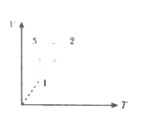
View Solution
Knowledge Check
During the process AB of an ideal gas
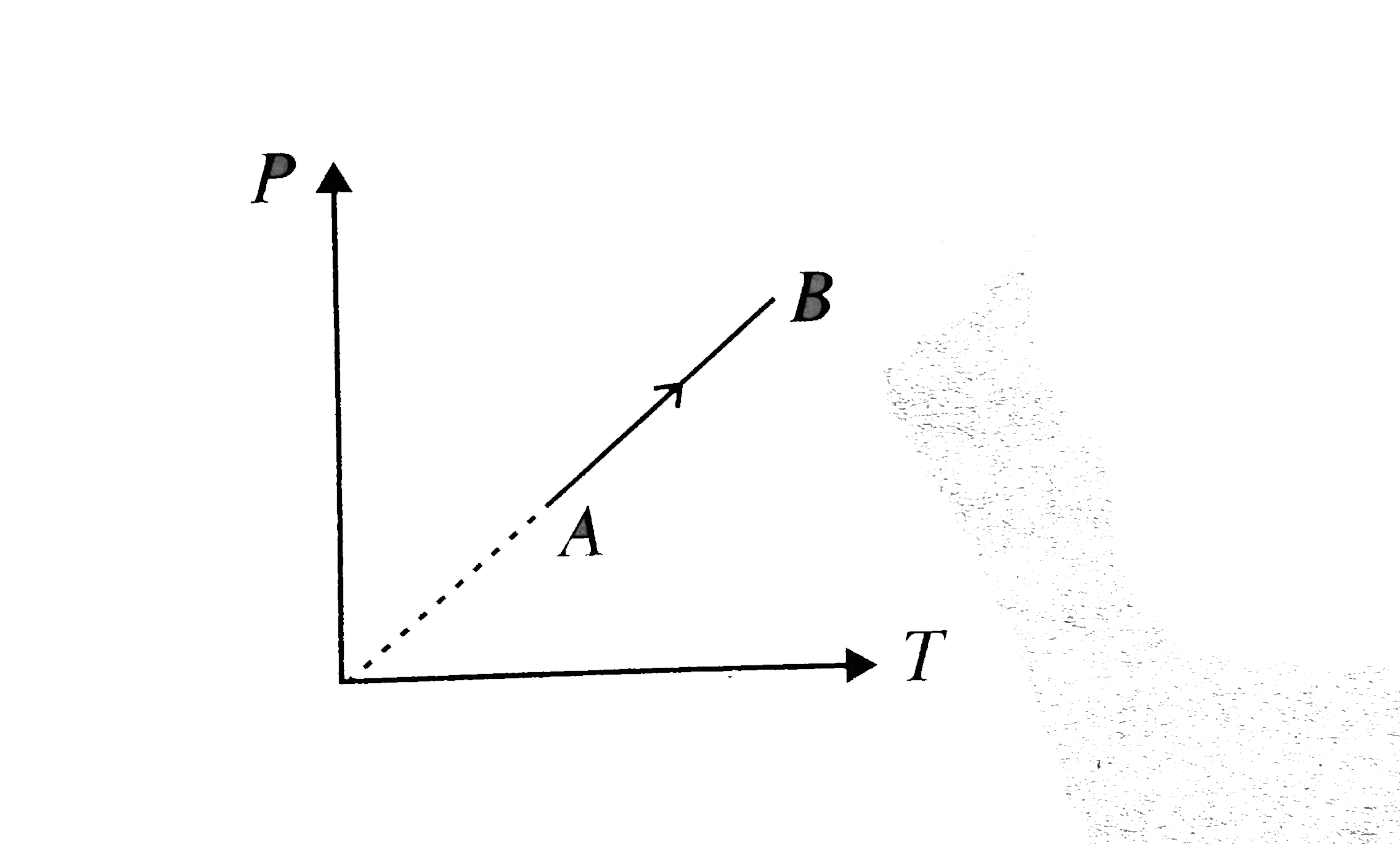 Awork done on the gas is zeroBdensity of the gas is constantCslope of line AB from the T-axis is inversely proportional to the number of moles of the gasDslope of line AB from the T-axis is directly proportional to the number of moles of the gas
Awork done on the gas is zeroBdensity of the gas is constantCslope of line AB from the T-axis is inversely proportional to the number of moles of the gasDslope of line AB from the T-axis is directly proportional to the number of moles of the gasTwo moles of an ideal monoatomic gas undergoes a cyclic process ABCA as shown in V-T diagram below:

Heat supplied to the gas during the process AB is :A1200Rln2B1800 RC1200 RDZeroCorresponding to the process shown in figure, what is the heat given to the gas in the process ABCA?
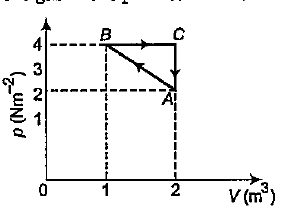 A1JB32JC12JD0
A1JB32JC12JD0
An ideal gas undergoes a process A→B→C shown in P−V graph. Then total heat given to the gas during the whole process (A→B→C) is n×104J, then n is:
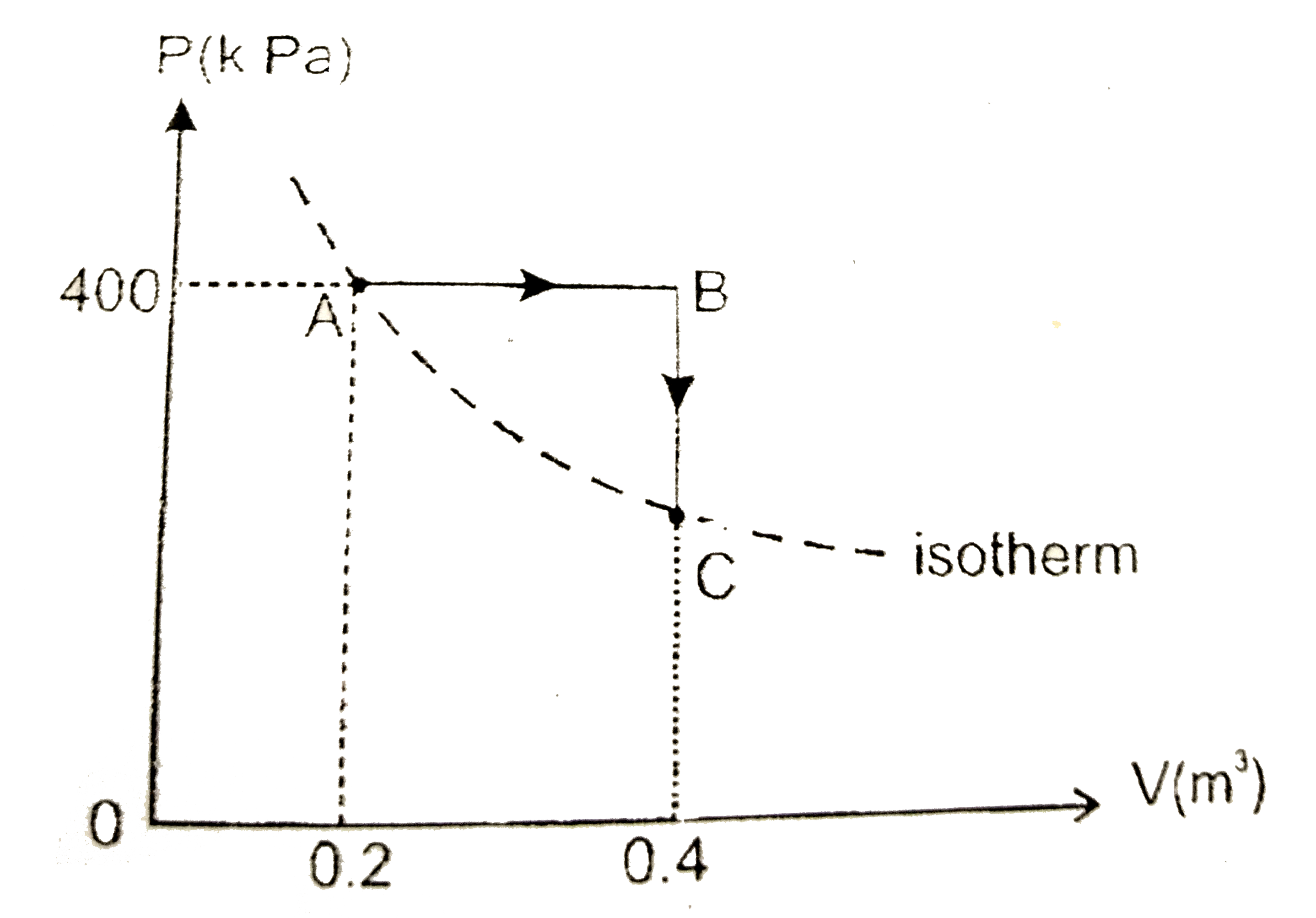
View Solutionconsider the P-V diagram given below for a cyclic process.Find the net heat supplied to the system during the process
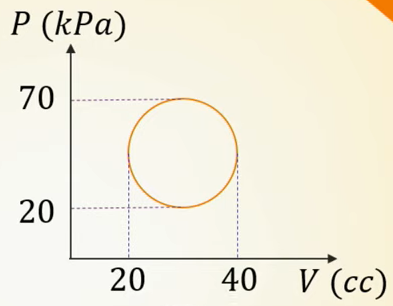
View SolutionA diatomic gas done 80J work when expanded isobarically. Find the heat given to the gas during this process?
View SolutionGas with in a chamber, passes through the cycle shown in (figure). Determine the net heat added to the system during process AB is QAB=20J. No heat is transferred during process BC and net work done during the cycle is 15J
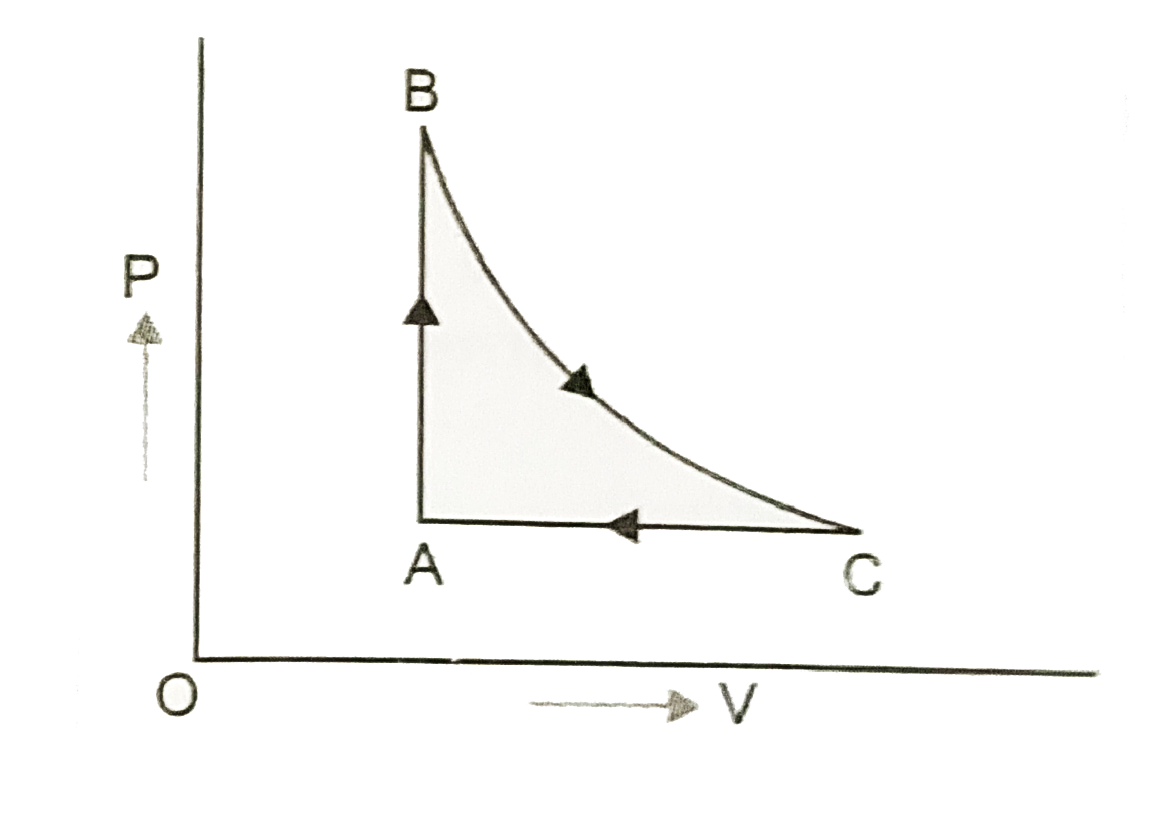
View Solutionshows two processes A and B on a system.Let DeltaQ_(1) and DeltaQ_(2) be the heat given to the system in processes A and B respectively. Then
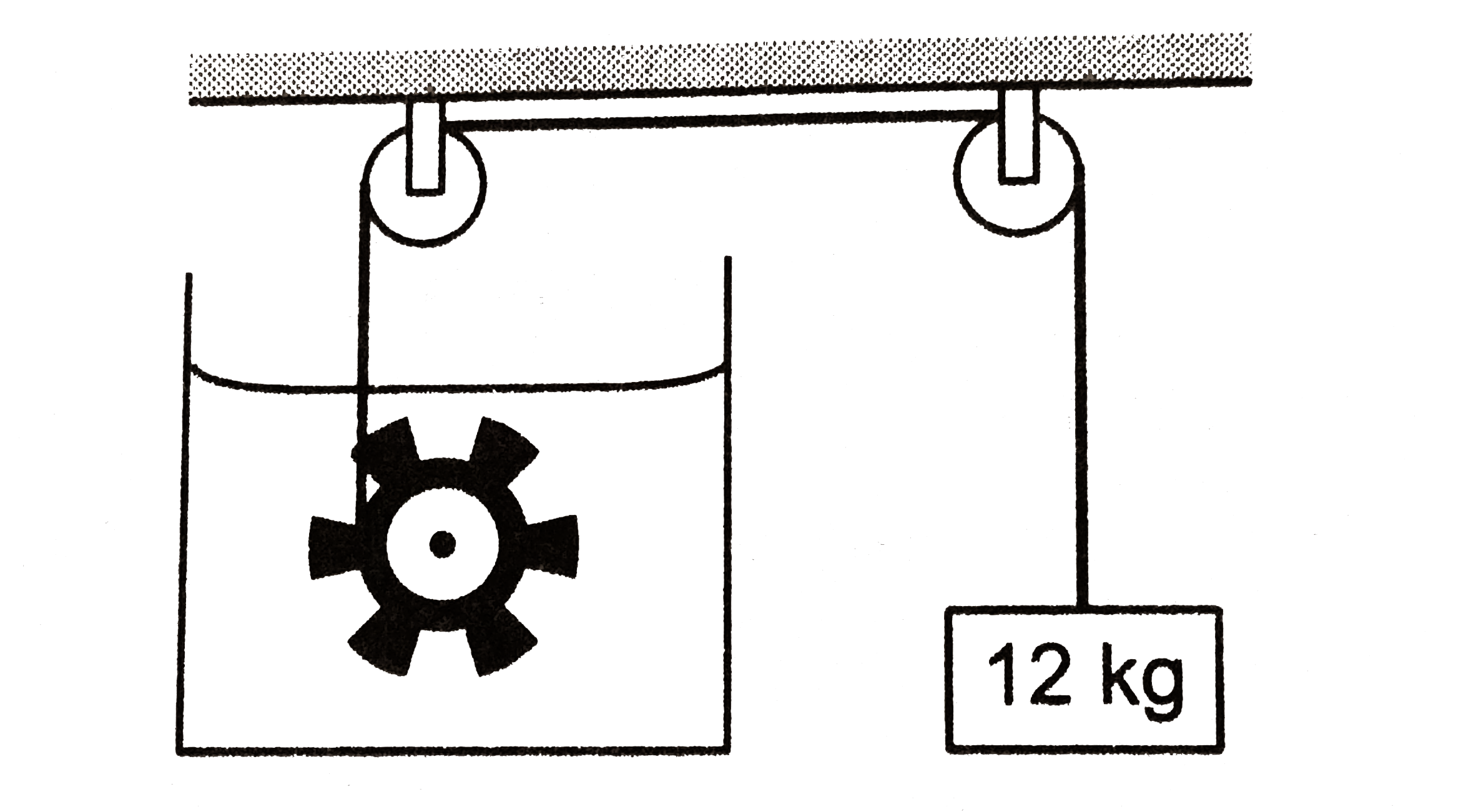
View Solution
